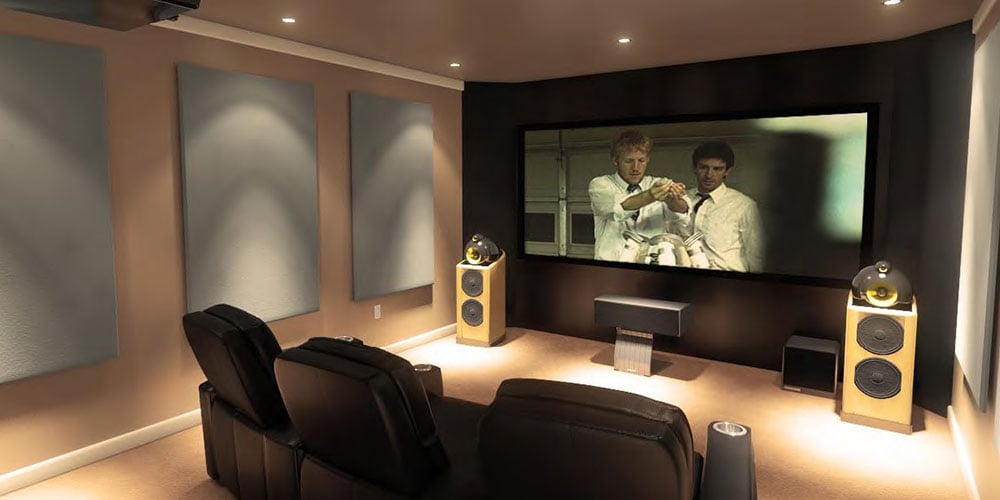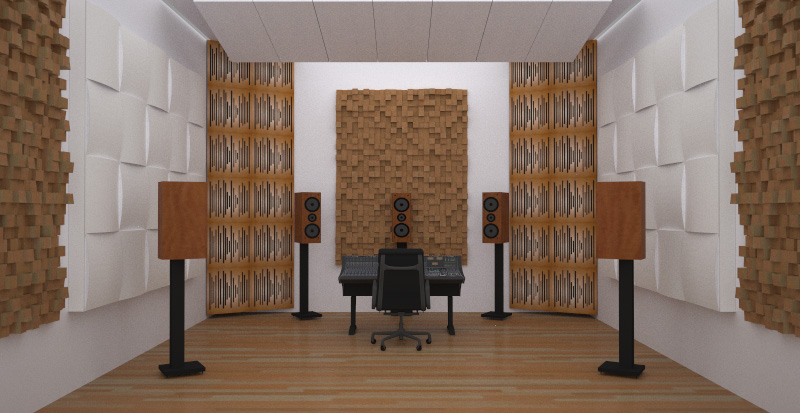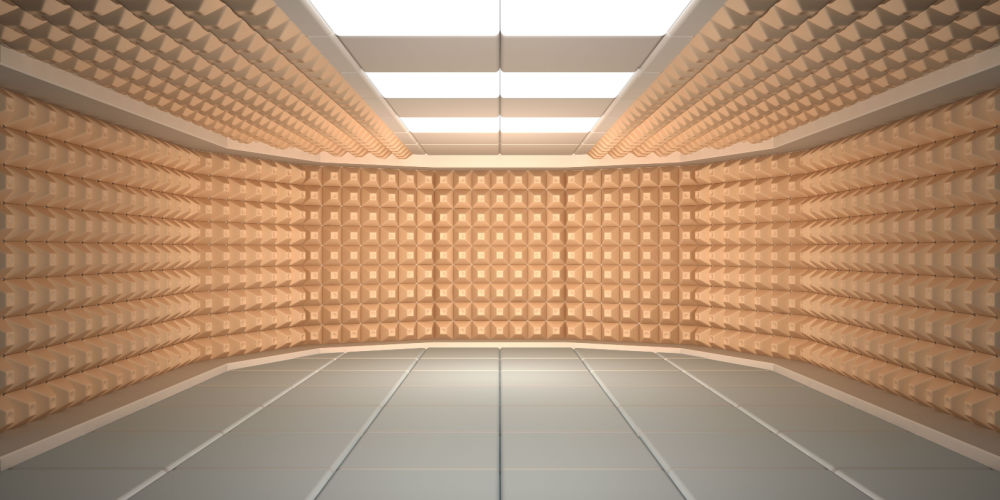
Soundproofing Insulation of a Room is a prevalent trend now a day; you can also insulate your bedroom and block all the noise from entering. The process is straightforward, and you can also do it yourself. This method has made life easier and more comfortable for people worldwide. The trend is increasing, and you can become part of this trend too. The material doesn’t affect the dimensions of the room or the design.
Multiple types of soundproofing materials are available on the market today, each with unique characteristics and benefits. These materials can range from basic acoustic panels and foam to more advanced options like mass-loaded vinyl and soundproof drywall. With suitable materials and techniques, it’s possible to create a soundproof and aesthetically pleasing room.
It’s important to note that soundproofing is not the same as sound absorption. While proper absorption helps to reduce the echo and reverberation in a bedroom, soundproofing materials are designed to block the sound from entering or leaving a space. The choice of soundproofing material will depend on the specific needs of your area, including the type and frequency of sound you are trying to block, the size and shape of the room, and the available budget.
Assessing the Room

Soundproofing Insulation of a Room involves identifying noise sources and determining the sound transmission class (STC) rating of the walls, ceilings, and floors. Understanding how much sound is transmitted and what materials are needed to block it effectively is essential. This process is done in two steps; first, you will have to find sources, and then you will have to measure the STC Rating.
· Identify Sources of Noise
Before soundproofing a bedroom, it’s essential to identify the noise sources contributing to the problem. This could include external noise from traffic, airplanes, or neighbors and internal noise from appliances, electronics, or conversations in adjacent bedrooms. By identifying the specific sources of noise, you can determine which soundproofing materials and techniques. These will be most effective in addressing the problem.
· Determine Sound Transmission Class (STC) Rating
The sound transmission class (STC) rating measures how well a material or assembly can block sound. The higher the STC rating, the better the material or group reduces sound transmission. The STC rating takes into account factors such as the thickness of the material, the density of the material, and any air gaps or other spaces in the assembly.
When assessing a room for soundproofing, it’s essential to determine the current STC rating of the walls, floors, and ceilings. This can be done by consulting with a professional soundproofing contractor. This can also be done using a sound meter to measure the decibel levels inside and outside the bedroom. Once you have determined the current STC rating, you can decide which level of soundproofing will be needed to achieve the desired level of noise reduction.
Preparing for Installation

After the assessment, you must prepare the bedroom to install the material. Once you are done with your room, no voice will enter or leave this room. However, you must do the previous steps carefully to work this out perfectly.
· Clearing the Room
Before starting soundproofing, it’s essential to clear any furniture or decor in the bedroom. This will allow easy access to the walls, ceilings, and floors. You may also save your stuff from getting destroyed during the process. So, clear the bedroom of all the material and allow the job to be done quickly. It is essential that the bedroom is empty or the job can’t be done correctly.
· Measuring the Area
Measuring the area of the bedroom is crucial in determining the amount of insulation material needed. The measurements should include the height, width, and length of the walls, ceilings, and floors. You can search online to find the requirement of material for your bedroom. Some websites help you find the exact fabric required for your room. Measure the space and enter the data into the website to find the needed material. You can contact experts to ask for a precise estimation of materials.
· Choosing the Right Insulation Material
Choosing the suitable insulation material is critical to achieving optimal soundproofing results. Various insulation materials, including fiberglass, foam board, and acoustic panels, are available. Factors to consider when choosing insulation material include budget, desired level of soundproofing, and ease of installation. You can figure out the budget and how much material you will require by measuring the area of the room. While assessing the room, you will find the sources of sound and STC rating. This will help you determine the suitable material for your space. It is important to contact experts for advice.
Installation
So, when you are done assessing the room for the sources and finding out the exact measure of the sound, you will have to buy the material. Then, you will be aware of the budget and what kind of materials you require. After you have the material at home, you can install the panels to soundproof the bedroom. It is a straightforward process; read below and follow the:
· Applying insulation to walls
The first step is to choose the material according to your budget and needs. Then the next step is to apply it to the room’s walls. This process involves cutting the insulation material to fit the walls and securing it with staples, adhesives, or insulation hangers. Ensuring that the insulation material is applied evenly and tightly to the walls is essential to prevent any air gaps. Any gaps in the material will not serve the purpose. Soundproofing Insulation of a Room requires proper attention so no hole is left.
· Filling gaps and seams
After the insulation is applied, the next step is to fill gaps or seams with sealant to prevent air leaks. This can be done using spray foam insulation or specialized acoustic glue. It’s crucial to pay attention to areas around windows, doors, and electrical outlets. You must also pay attention to other openings that allow sound to enter or exit the bedroom. It would be best if you did not let any gaps in the first place, but some areas leave gaps, no matter how much you try. So, fill it appropriately to enclose the room.
· Covering with drywall
Once the insulation is applied and any gaps or seams are sealed, the next step is to cover the walls with drywall. This final layer helps to further block any sound from entering or exiting the room. It’s essential to use high-density drywall. These include soundproof drywall and ensuring the seams are taped and mudded correctly to create a seamless surface. The material of drywall varies, and so is its price. So, always consider the price beforehand. Ask any expert to estimate the actual cost ahead for you.
Additional Tips

The following tips can help you increase the soundproofing of the room. If you are done installing the panels and still can’t get the results you were looking for, the following tips can help you out.
· Adding Acoustic Panels
Acoustic panels are here to absorb sound waves and reduce noise levels in a room. They can be placed on walls or ceilings and come in various materials, shapes, and colors. Adding acoustic panels to a room can improve its overall sound quality and reduce echo and reverberation.
· Soundproofing Floors
Soundproofing a floor involves adding a material layer between the existing floor and the subfloor. This can include mass-loaded vinyl, acoustic underlayment, or floor mats. By soundproofing your feet, you can prevent sound from traveling between floors and reduce noise levels in the bedroom.
· Soundproofing Doors and Windows
Doors and windows are often a significant source of noise transmission. Soundproofing involves using weather-stripping, door sweeps, and soundproof curtains to block sound. You can also add soundproofing window films or double-glazed windows to reduce noise levels further. By soundproofing your doors and windows, you can significantly reduce outside noise levels and improve the overall sound quality of your room.
Conclusion
In conclusion, soundproofing insulation is an effective way to reduce noise transmission in a bedroom. It is essential first to assess the noise sources and determine the appropriate sound transmission class (STC) rating needed for the room. Clearing the space, measuring the area, and choosing the suitable insulation material are essential steps to consider before installing. Applying insulation to walls, filling gaps and seams, and covering with drywall are critical steps in Soundproofing Insulation of a Room. Adding acoustic panels, soundproofing floors, and soundproofing doors and windows can also help improve the soundproofing of a room. Following these steps and choosing suitable materials can significantly reduce noise transmission in a room. You can do this by providing a more comfortable and peaceful environment.


